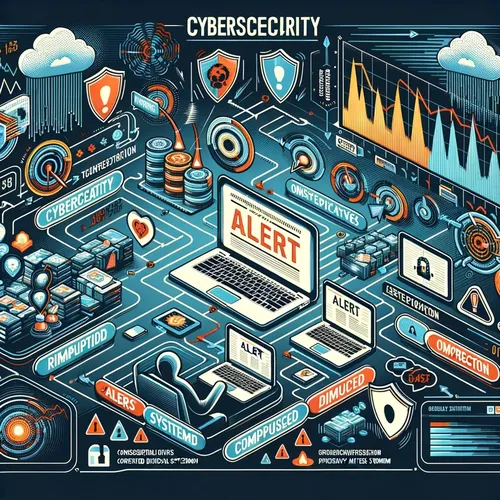Beijing's Cyber Crescendo: Sleeper Cells, Deepfakes, and a 150% Surge in Attacks
- Author
- Quiet. Please
- Published
- Wed 03 Sep 2025
- Episode Link
- https://www.spreaker.com/episode/beijing-s-cyber-crescendo-sleeper-cells-deepfakes-and-a-150-surge-in-attacks--67622182
This is your Red Alert: China's Daily Cyber Moves podcast.
Hey listeners, it's Ting—your cyber sherpa and unofficial ambassador of fun security paranoia. If you’ve been following headlines, you know today’s Red Alert comes straight out of Beijing’s own playbook. So buckle up; we’re fast-forwarding you from the command line to the global chessboard—no loading screen required.
Let’s get right to it. This week is the grand finale of China’s 14th Five-Year Plan, and if history is any indicator, Beijing closes out these cycles with a cyber crescendo. That means critical U.S. infrastructure—utilities, telecom, schools, government agencies—you’re in the crosshairs. Groups like Volt Typhoon and Salt Typhoon are ramping up. We’re talking about advanced persistent threat actors burrowing deeper into networks, mapping out control systems, and quietly setting up digital explosives they can flip on if the geopolitical winds shift. Think sleeper cells, but with more shell script and less bad accent acting.
CrowdStrike’s 2025 report dropped a bombshell: malicious cyber activity traced to the People’s Republic of China shot up 150 percent over 2024. That’s more brute force attempts, more zero-day exploits, and, very notably in the past 48 hours, a wave of zero-click attacks on telecoms—especially in the southeast U.S. These aren’t smash-and-grab jobs. These are campaigns designed for access, patience, and plausible deniability.
CISA and the FBI haven’t been quiet, either. Emergency advisories are flying, with alerts about fresh vulnerabilities—WhatsApp, TP-Link routers, Chrome’s new CVE-2025-57819, and even FreePBX zero-days making the rounds. Security Affairs just reported CISA’s inclusion of these flaws in the Known Exploited Vulnerabilities catalog, meaning they are being hammered right now.
Let’s hit a rough timeline. Over Labor Day weekend, “Salt Typhoon” launched phase two of an infiltration targeting call records, law enforcement datasets, and backbone routers at major U.S. telecoms. By Monday morning, at least two state agencies—from North Carolina to Illinois—reported credential stuffing, VPN brute-forces, and, yes, some deepfake-enabled phishing. As of this afternoon, over 200 organizations globally are confirmed compromised, and that number may rise.
What’s changed this week? The use of AI-driven social engineering and deepfake disinformation. Municipal elections, ballot initiatives, even school board meetings are being targeted with fake robocalls and doctored emails designed to look like local officials or journalists. If it feels like the bad guys suddenly know who’s running for city council in Peoria, you’re not imagining things.
Defensive actions? If you’re in IT—triple check your patching, revoke stale third-party credentials, and escalate anomalous logins. Moves like network segmentation and two-factor authentication aren’t optional anymore. CISA’s advice: hunt actively, assume stealthy persistence, and collaborate across state and federal lines. Texas launched their Hostile Foreign Adversaries Unit just for this—because they know, like Kelley Currie told state senators, you can’t let your guard down at the local level.
If escalation comes—a Taiwan crisis, a snap sanction—expect “sleeper” access to flip to sabotage. Power grids, phone networks, even school systems could go dark or haywire, almost instantly. This isn’t sci-fi, it’s the execution layer of Beijing’s plan, and it’s already built.
Thanks for tuning in—and if you want more cyberplot twists with your daily news, subscribe! This has been a quiet please production, for more check out quiet please dot ai.
For more http://www.quietplease.ai
Get the best deals https://amzn.to/3ODvOta
